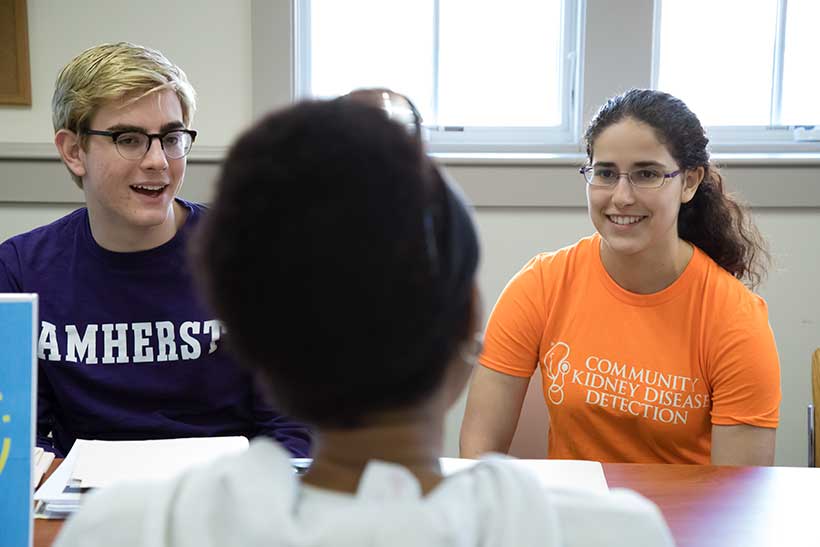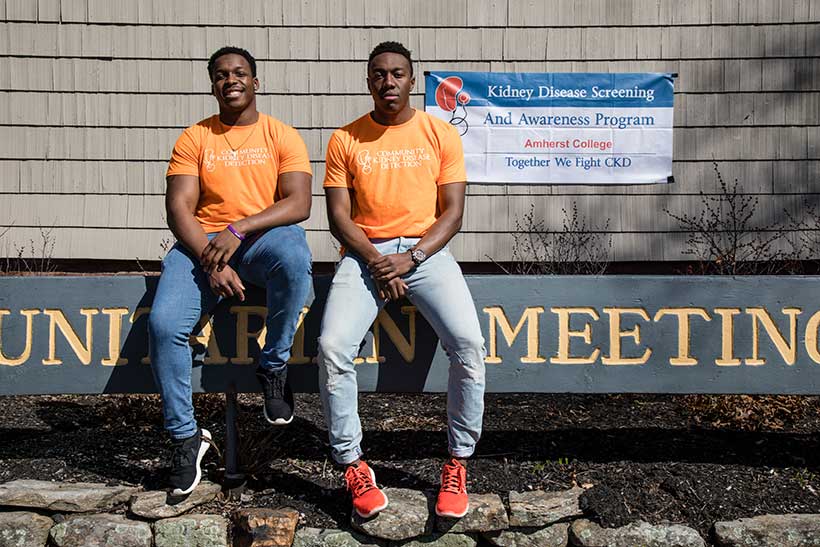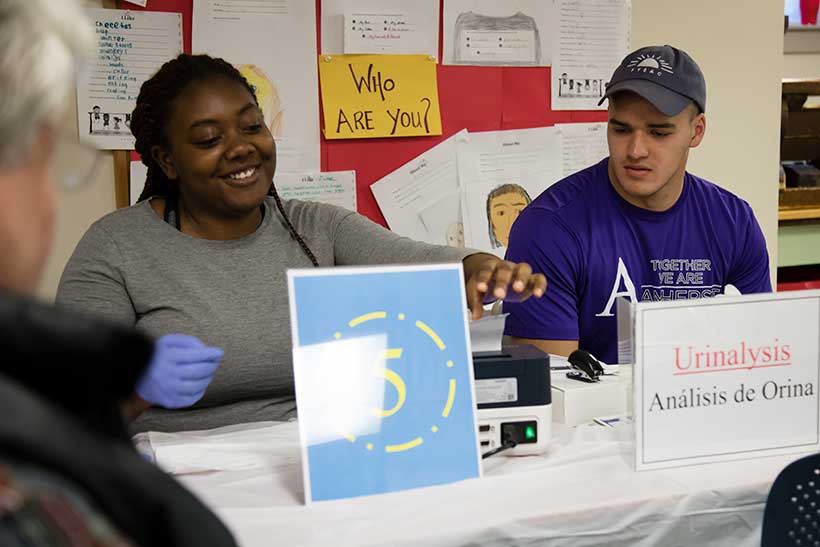
In ancient Egypt, they removed all organs from a mummified body save for the heart—and the kidneys.
It seems that kidneys were held in high esteem: they were a symbol of fairness, since they lie symmetrically on either side of the spine and are equal in size. In fact, ancient drawings depict kidneys like the scales of justice.
So it seems cruelly unjust, today, that renal failure is the 8th leading cause of death in America. The big problem is that it’s a “silent killer,” often asymptomatic, thus early screening is crucial. Chronic kidney disease costs society too (think long-term dialysis) and there is a serious shortage of nephrologists.
Enter the Amherst College chapter of the Kidney Disease Screening Awareness Program (KDSAP). On Saturday, March 31, it held a walk-in screening event at the Unitarian Universalist Society in downtown Amherst.

Sporting neon orange KDSAP T-shirts, Sam Amaka ’19 and Cornell Brooks ’19 stood on North Pleasant Street by the big clapboard building, smiling and trying to rope in passersby. “I tell them it’s an opportunity you don’t often get,” said Brooks, who like many students here today is pre-med: “It’s free, there’s a doctor on site to answer any questions, and you get a free bus pass too.”

In the basement, full of inspirational posters for Unitarians and toys for its preschool class, the Amherst students sat in pairs at five stations marked by signs in English and Spanish: 1) Registration; 2) Body Measurements; 3) Blood Glucose; 4) Blood Pressure; 5) Urinalysis.

For four hours, visitors trickled in, with 25 students serving between two shifts. I shadowed Olwen Williams, 52, who takes pride in tending her health, insisting that she eats baked chicken, plenty of greens and could walk “from here to Timbuktu!” When asked why she was here, she laughed: “Better to be safe than sorry! And the students are awesome.”
At the BMI station, Jason Seto ’19 politely asked Williams to remove her shoes and hop on the scale, then lean against a height chart. Next, like an intent tailor, Seto wrapped the measuring tape around her waist and hips. He fed the numbers to Bina Aaron ’20, who plotted them on a BMI assessment chart.

After Williams’s blood pressure was taken, Bree Barnes ’20 placed a dipstick into a urine sample and a diagnostic machine scrutinized it for telltale traces of blood, or certain protein or pH levels, which can signal kidney dysfunction.

At least one of today’s students—Caroline Yao ’19—is considering becoming a nephrologist. If she dives into the scientific literature, she’ll find that the malady has a long history: by analyzing the kidneys in those Egyptian mummies, modern scientists found that kidney disease was not uncommon then either.

On my way out, Lynn Kao ’20, who has studied inequities in health care, explained why she gave up a sunny Saturday afternoon to be here: “What attracted me is that you can go off campus—and feel you are able to help someone.”